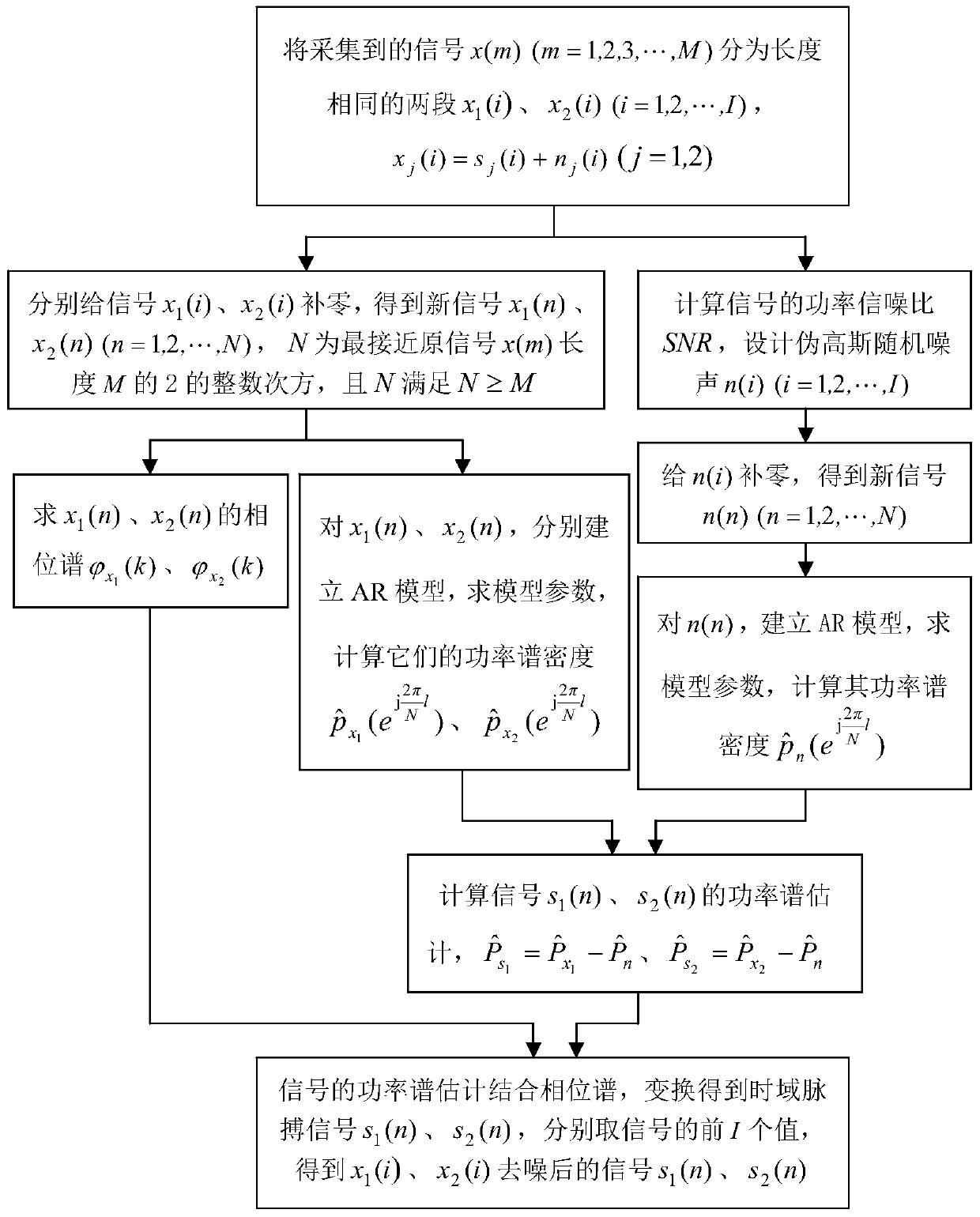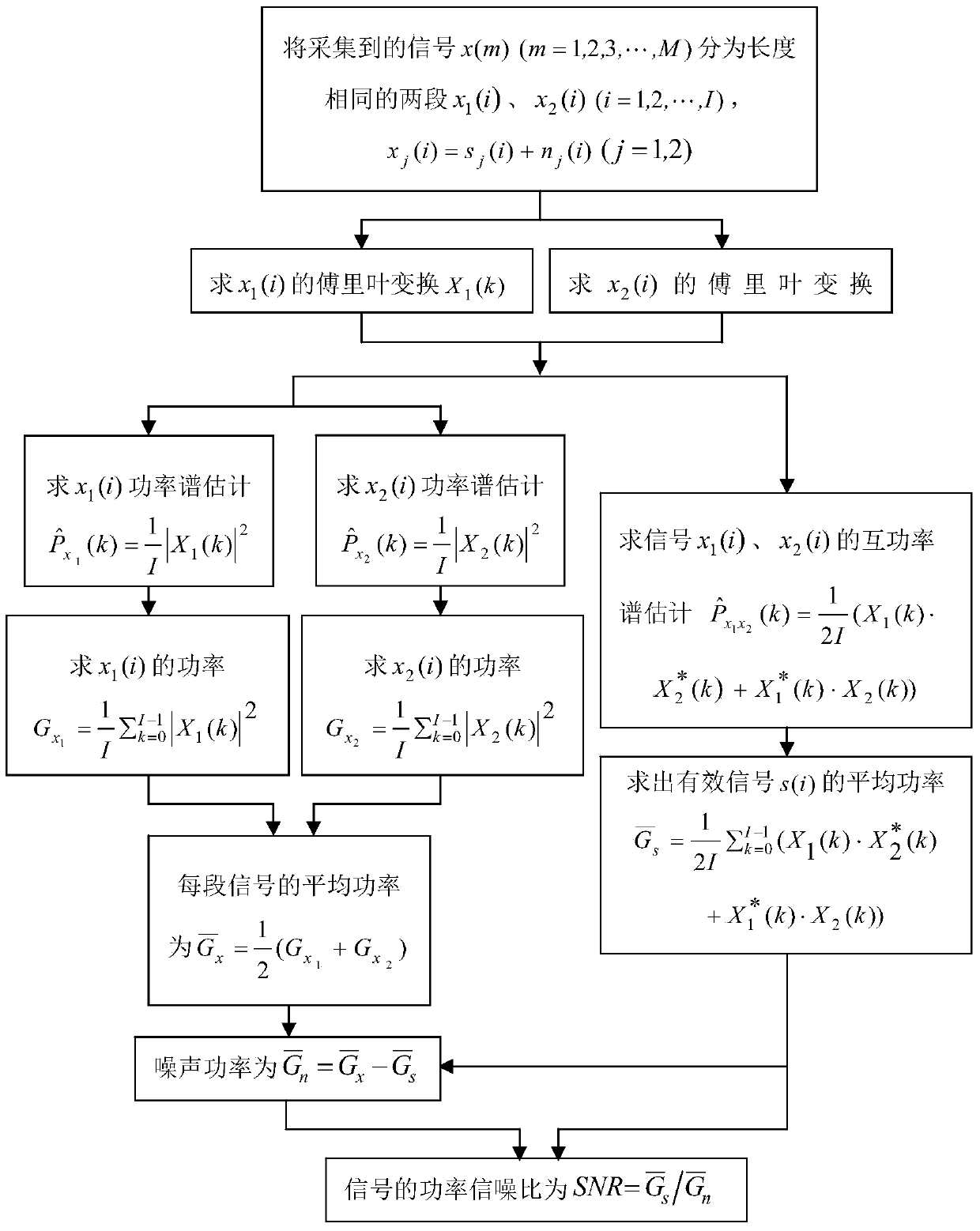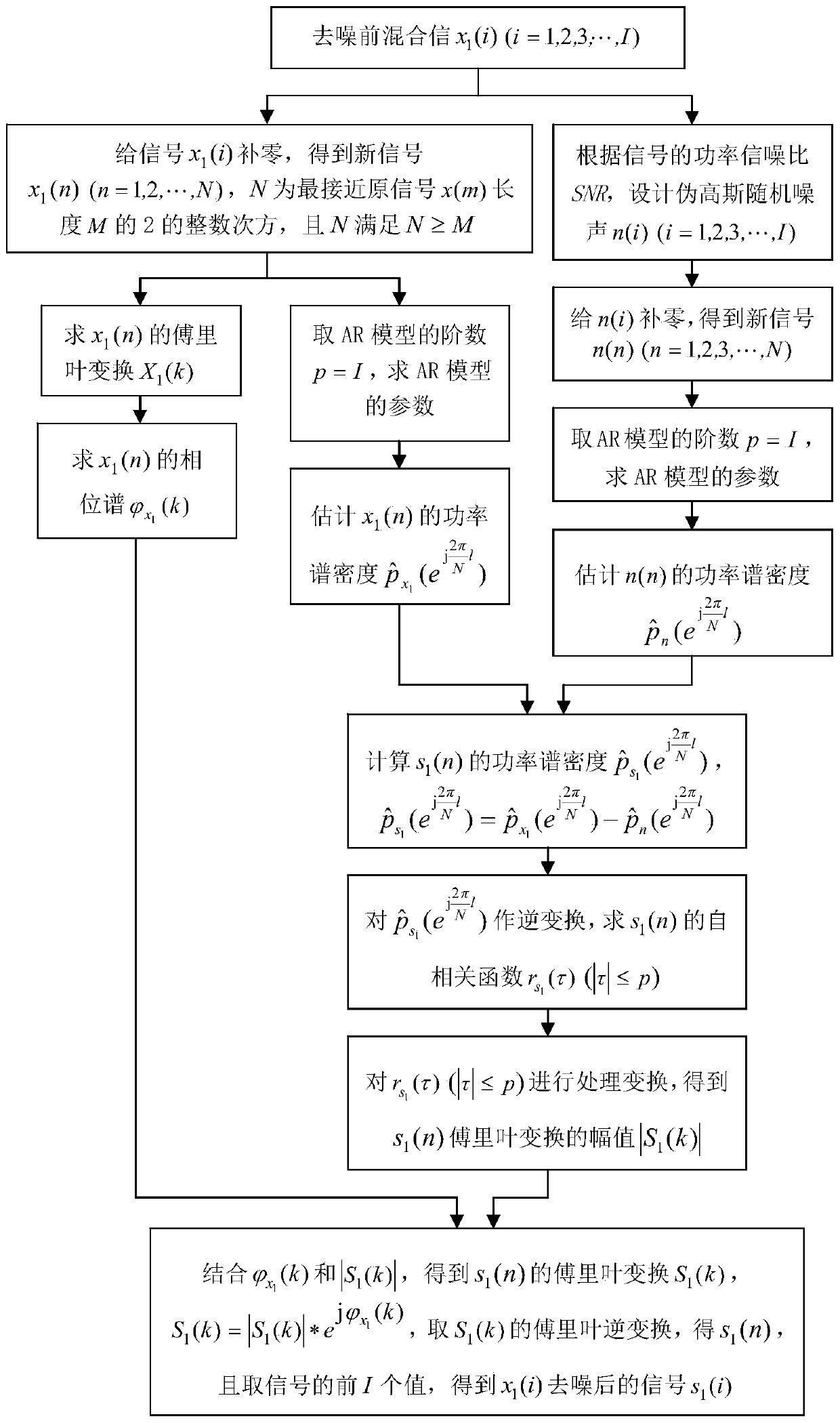A random noise denoising method of pulse signal based on AR model spectrum estimation
A technology of pulse signal and AR model, which is applied in the fusion field of information science and medicine, can solve problems such as inability to separate useful signals from noise signals, random noise, pseudo-Gibbs phenomenon, etc.
- Summary
- Abstract
- Description
- Claims
- Application Information
AI Technical Summary
Problems solved by technology
Method used
Image
Examples
Embodiment 1
[0066] Embodiment 1: as Figure 1-21 As shown, a pulse signal random noise denoising method based on AR model spectrum estimation, the steps of this method are as follows:
[0067] Step1. Divide the collected pulse signal into two sections with the same length to calculate the signal power signal-to-noise ratio, estimate the noise variance through the calculated signal power signal-to-noise ratio, and then establish a random noise signal model to design a random noise signal;
[0068] Step2, respectively padding the two sections of signals with zeros so that the size of the two sections of signals is the integer power of 2 closest to the length of the original signal, performing Fourier transform on the mixed signal after zero-padded to retain its phase spectrum;
[0069] Step3. Establish an AR model for the two mixed signals after zero padding, determine the AR model and model order, obtain the parameters of the model according to the model, and substitute the power spectral ...
Embodiment 2
[0105] Embodiment 2: as Figure 1-21 As shown, a pulse signal random noise denoising method based on AR model spectrum estimation, the steps of this method are as follows:
[0106] Step 1. Divide the collected pulse signal into two sections with the same length to calculate the power signal-to-noise ratio of the signal, estimate the noise variance through the calculated signal power signal-to-noise ratio, and then establish a model of the random noise signal;
[0107] The concrete steps of described step Step1 are as follows:
[0108] Step1.1. The collected real pulse signal data x(m) (m=1,2,3,...,M) of a woman, such as Figure 4 , pulse data length M=20000, divide x(m) into two sections of signal x with the same length 1 (i) and x 2 (i) (i=1,2,3,...I), I=10000, x 1 (i) and x 2 (i) respectively if Figure 6 , 8 shown;
[0109] Step1.2. The collected pulse signal x(m) (m=1,2,3,...,M) is composed of effective pulse signal s(m) and noise signal n(m), that is, x(m) =s(m)+...
PUM
 Login to View More
Login to View More Abstract
Description
Claims
Application Information
 Login to View More
Login to View More - R&D Engineer
- R&D Manager
- IP Professional
- Industry Leading Data Capabilities
- Powerful AI technology
- Patent DNA Extraction
Browse by: Latest US Patents, China's latest patents, Technical Efficacy Thesaurus, Application Domain, Technology Topic, Popular Technical Reports.
© 2024 PatSnap. All rights reserved.Legal|Privacy policy|Modern Slavery Act Transparency Statement|Sitemap|About US| Contact US: help@patsnap.com










